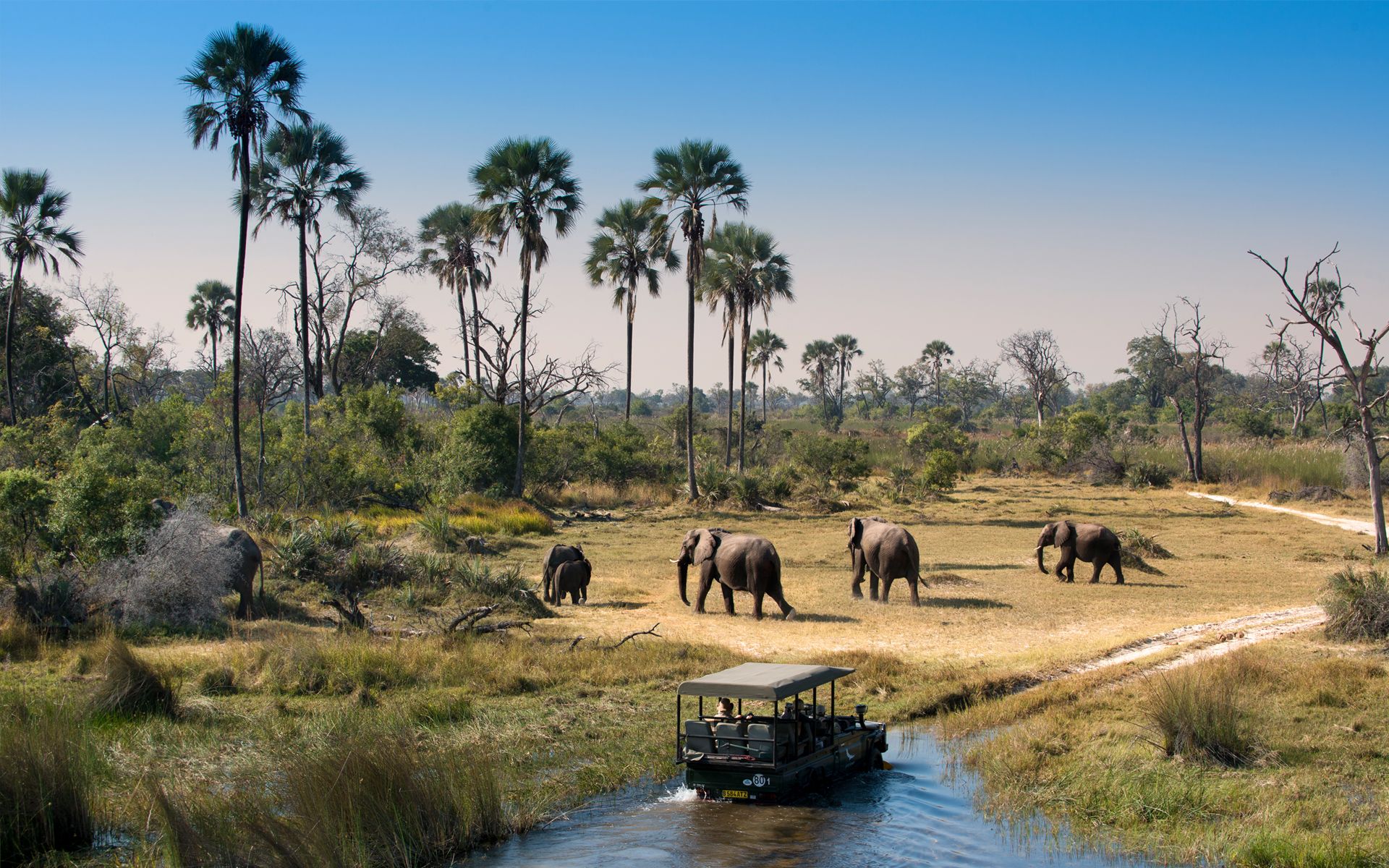Okavango Delta and Caprivi Strip
The Okavango Delta is a large Inland Delta located in north-western Botswana. The area includes permanent swamps which cover approximately 600,000 hectares along with up to 1.2m hectares of seasonally flooded grassland. The Okavango Delta is one of a very few large inland delta systems without an outlet to the sea, known as an endorheic delta, its waters drain instead into the desert sands of the Kalahari Basin. It is Africa’s third largest alluvial fan and the continent’s largest endorheic delta. Furthermore it is in a near pristine state being a largely untransformed wetland system. The biota has uniquely adapted their growth and reproductive behavior, particularly the flooded grassland biota, to be timed with the arrival of floodwater in the dry, winter season of Botswana. The geology of the area, a part of the African Rift Valley System, has resulted in the ‘capture’ of the Okavango River that has formed the Delta and its extensive waterways, swamps, flooded grasslands and floodplains. The Okavango River, at 1,500kms, is the third largest in southern Africa. The Delta’s dynamic geomorphological history has a major effect on the hydrology, determining water flow direction, inundation and dehydration of large areas within the Delta system. The site is an outstanding example of the interplay between climatic, geomorphological, hydrological, and biological processes that drive and shape the system and of the manner in which the Okavango Delta’s plants and animals have adapted their lifecycles to the annual cycle of rains and flooding.
The Caprivi Strip, also known simply as Caprivi, is a geographic salient protruding from the northeastern corner of Namibia. It is bordered by Botswana to the south and Angola and Zambia to the north. Namibia, Botswana and Zambia meet at a single point at the eastern tip of the Strip, which also comes within 150 m of Zimbabwe thus nearly forming a quadripoint. Botswana and Zambia share a 150-metre border at the crossing of Kazungula. The territory was acquired by then-German South West Africa in order to provide access to the Zambezi River and consequently a route to the east coast of the continent and German East Africa. The route was later found not to be navigable because of the location of Victoria Falls, one of the world’s largest waterfalls, about 65 kilometers east of the Strip. Within Namibia, the Strip is divided administratively between the Kavango East and Zambezi regions and is crossed by the Okavango River. The Cuando River forms part of its border with Botswana, and the Zambezi River forms a part of its border with Zambia. The width of the strip varies from about 32 km to 105 km). Its largest settlement is Katima Mulilo, located at the point where the Zambezi reaches the Strip. The area is rich in natural wildlife and has mineral resources of particular interest to the government of Namibia.
What to expect? When visiting the Okavango River, Delta as well as the national parks in the Caprivi strip such as Mahango National Park and Bwabwata national park, you will experience your traditional big game safari. Lush vegetation and consistent rainfall have made this area a garden of Eden of sorts and attracts hundreds of thousands if not millions of animals yearly. Ensure that your camera is fully charged and on the ready as you won’t want to miss a single frame.

